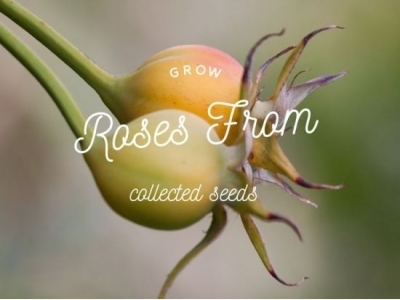Growing Roses from Collected Seeds

Roses are probably the most popular flower grown by organic gardeners, given their beauty, scent, and hardiness. However, all too often we ignore the opportunity to take advantage of a simple method of propagation, opting instead to cut their flowers and put them in vases.
A bit of restraint and patience can result in tons of seeds that will allow you to propagate your roses for next to nothing. Or, if you’re looking for an interesting hobby, to hybridize your own new varieties. Many famous rose cultivars have come from the gardens of amateur breeders.
HOW TO COLLECT SEEDS FROM ROSES
Most roses will go to seed naturally, given the opportunity. Let them. What you’ll end up with is a large bulge behind the flower that, after about four months, will turn orange. This is essentially an ovary, better known as a rose hip.
Collect it and cut it open, and you’ll find that it’s packed with seeds. Remove them from the flesh, clean them and dry them to prevent mold, and store them for planting during the next available season. If you put them in a plastic baggie and keep them in your refrigerator’s vegetable crisper, they’ll be just fine.
Có thể bạn quan tâm
 When to Plant Elephant Ear Bulbs
When to Plant Elephant Ear Bulbs Colocasia, also known as elephant ears or taro, make spectacular landscaping plants. Their long stalks and large, luxurious leaves add a tropical feel
 Are Elephant Ear Plants Poisonous?
Are Elephant Ear Plants Poisonous? Here’s a puzzle for you: what plant is toxic, yet serves as a major food source for many countries in Asia? The answer: Colocasia, also known as elephant ear
 Diseases of Zucchini Plants
Diseases of Zucchini Plants With such a glut of zucchini, it’s hard to believe that these popular vegetables are subject to a whole host of destructive diseases.